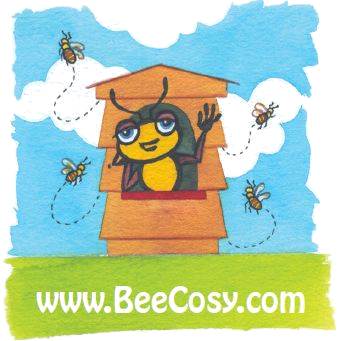Insulation Examples
At the beginning of the 20th Century, in the heyday of beekeeping, Americans regularly used to move their hives into ventilated cellars to protect their hives from the elements and provide consistent levels of temperature and humidity.
Countries which regularly suffer harsh winters (e.g. USA / Canada) with many days at -10C (14F) and below deploy methods to insulate the whole hive although they have fewer issues with ventilation as the hives normally use top entrances, thereby providing good ventilation.
Here in the UK, whilst we have begun to have harsh winters too, the only insulation solutions available have been under the hive roof.
These are some of the solutions that rare being used today around the world.
Black-coloured, wind-proof sleeves which warm colonies on sunny winter days so that they break cluster in lower than normal temperatures. Picture provided courtesy of CAPA.
Solar wraps are used to help colonies retain heat, but in turn, this approach prevents colonies from warming on sunny days.
Large Canadian honey businesses invest thousands of dollars building atmospherically controlled storage areas to house hundreds of hives in a regular temperature and humidity range. Picture provided courtesy of CAPA.
Hives are commonly moved to or located in bee-houses in Holland, Germany and Switzerland to provide protection from the elements. If these environments are enclosed then they can also provide a warmer and less variable temperature and humidity environment.
Many methods are deployed for insulating within the hive roof, including quilt, paper, wood shavings and insulation foam. The merit of this approach is that warm air can be trapped towards the top of the hive without impacting ventilation. The approach does not, however, help with heat loss through hive walls or avoid damp hive walls.
For the UK and similar climates with bottom hive entrances we have developed the Bee Cosy - the world's first breathable, waterproof hive cover.





